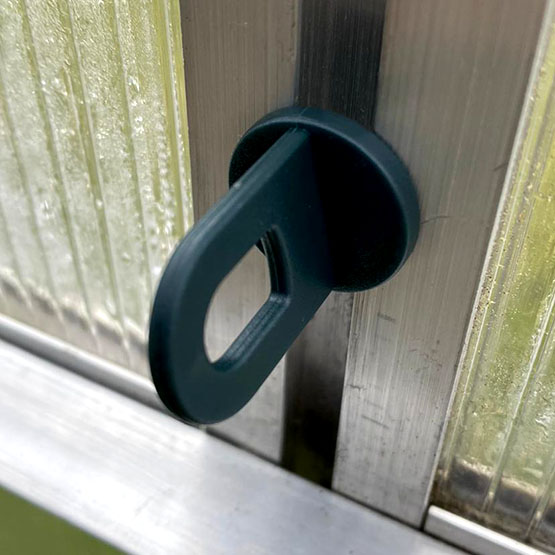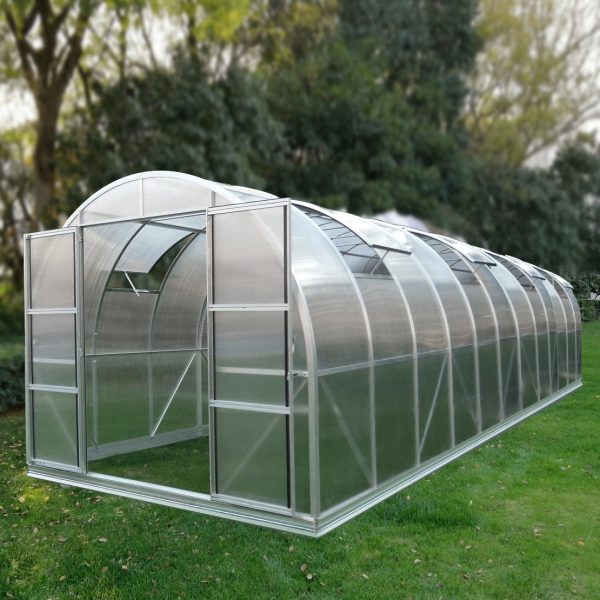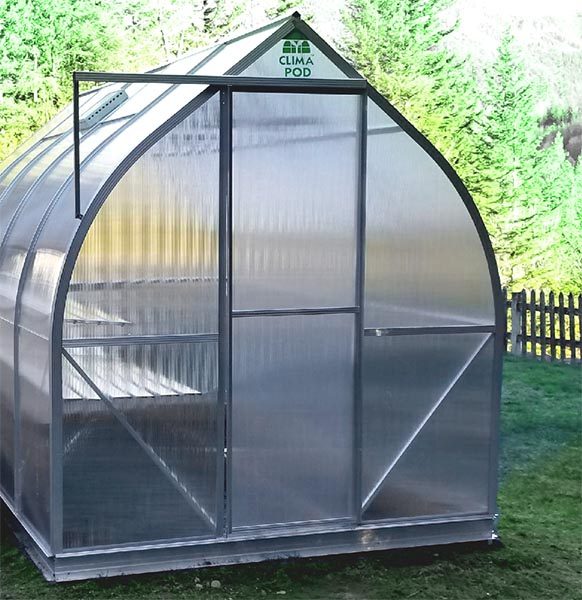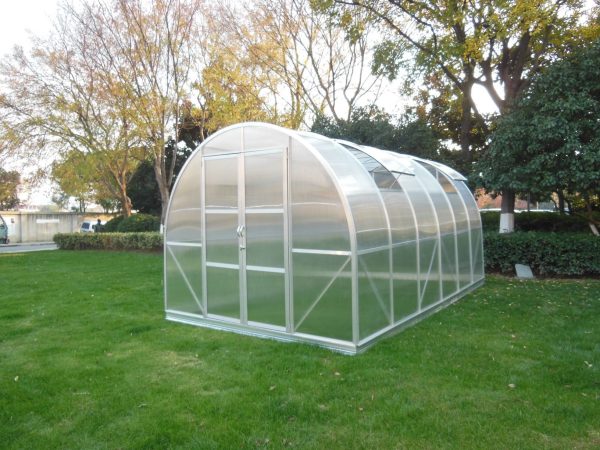Novice gardeners believe that greenhouse plants receive all the conditions for favorable active growth. However, in real life they require no less attention than their “relatives” from the open ground. The microclimate in greenhouses needs to be controlled and adjusted. So gardeners have to monitor basic indicators – humidity and temperature. Situations where the plants in your greenhouse require shade are more common than you might think.
Due to the scorching rays of the sun, the leaves of the bushes wither or get burned, the soil dries out, and the growth of agricultural crops stops. And this is not the saddest scenario yet. However, you shouldn’t be upset – you can always shade the greenhouse using improvised or purchased products. Find out how to do this in our article.
Why shade greenhouses
Already in the introduction, we briefly answered the question of why darkening a greenhouse is necessary. It is quite obvious that plants do not like too bright and scorching rays of the sun. Some crops get burned, others dry out, and others wither. In any case, the bushes experience stress, the consequences of which cannot be called pleasant.
Then another question arises – why shade plants from the sun if they grow in a greenhouse. After all, the polycarbonate coating itself scatters light, reducing the likelihood of burns and drying out of the bushes. This material actually prevents the unpleasant effects of sunlight. However, it cannot provide 100% protection, so the use of additional tools is welcome. In addition, different crops require different temperature conditions. If heat-loving plants can withstand even hot days quite steadfastly, then the rest still require more comfortable conditions.
What products can be used to darken
The darkening of the greenhouse itself comes down to the formation of a protective shading filter. In fact, it can be any fabric that prevents sunlight from penetrating into the interior space. However, to ensure optimal microclimatic conditions, special materials are still required. On the one hand, they will be able to shade the greenhouse. On the other hand, the required level of lighting will still be maintained. And this is extremely important, because for the process of photosynthesis the presence of light is a prerequisite.
Most often, gardeners use the following tools for darkening:
- Special protective mesh;
- Coating material;
- Whitewashing of polycarbonate.
Coating material is a good way to physically limit exposure to sunlight. However, the problem with its use comes down to excessive heat accumulation. Accordingly, protecting plants from light and sunburn can significantly overheat the interior of the greenhouse. As a result, the soil will dry out and the crops grown will wither.
Whitewashing a polycarbonate coating is an even less useful and effective method of shading. Of course, the sun will heat up significantly less if you apply a protective layer of paint. For this, by the way, you can use the classic version with slaked lime, a composition of chalk and milk, or any white water-based paint. However, such a coating will not be able to last long – it will simply be washed away by rain. In addition, this is not the most useful procedure for the polycarbonate itself. Paint may damage the protective film or contaminate the honeycomb of sheets.
Some gardeners install regular blinds inside the greenhouse to shade the greenhouse during the summer. The method is effective, but it cannot be called cost-effective. It is much more profitable to use a special protective net.
What is shade cloth (shading mesh)
In “home and garden” stores you can almost always find so-called shade nets. Their use allows you to reduce the intensity of sunlight, but at the same time do not interfere with the free access of air and do not accumulate excess heat. The nets are made from dense synthetic threads, so they do not tear and, despite their elasticity, keep their shape well.

The shading mechanism in the case of nets is not to cover the greenhouse or crops. It comes down to the reflection and dispersion of sunlight. Accordingly, plants continue to receive the level of lighting necessary for growth, but do not overheat. In addition, moisture evaporates more slowly, and the frequency of watering is somewhat reduced.
How to choose a shade cloth
Before purchasing, you need to understand what kind of mesh is needed to darken greenhouses. The main selection criterion is the required degree of darkness. This characteristic is determined by the size of the cells. The smaller the cell, the correspondingly less light it transmits. There are several levels of indicator:
- Low degree of darkening (25-35%);
- Average (35-55%);
- High (from 55%).
The choice of a specific mesh model depends on what crops are grown in the greenhouse. You can focus on the following numbers:
- For melons and cucumbers – 45%;
- For cabbage, tomatoes, eggplants – 50-60%;
- Universal for shade-loving plants (for example, ferns) – 70%.
As a rule, nets with a degree of darkness above 65-70% are no longer used for agronomic purposes. For example, with their help you can cover gazebos or make canopies for cars, livestock, etc.

In addition to the degree of darkness, the meshes also differ in color. The most common is green. This is a universal color whose properties are suitable for all plants. Red nets, in addition to protection from the scorching sun, create favorable conditions for more active growth of agricultural crops. In particular, the ovary forms faster, and the fruits appear a little earlier and in larger volume. To cover flowers, gray-blue nets are most often used, which promote the formation of flower stalks.
How to attach greenhouse shade cloth
The final question is how to make greenhouse shading using mesh most effective. In particular, it is important to securely fasten it to minimize windage. For this, it is most convenient to use special clips. You just need to stretch the mesh over the surface of the greenhouse covering and then secure it with clips.
Some gardeners prefer to save money and come up with their own fastenings from scrap materials. Most often, an ordinary thick rope is used, with which the mesh is attached to posts previously driven in near the greenhouse. Some gardeners tie plastic bottles filled with water to their edges to tension the shade nets. They actually become weights.
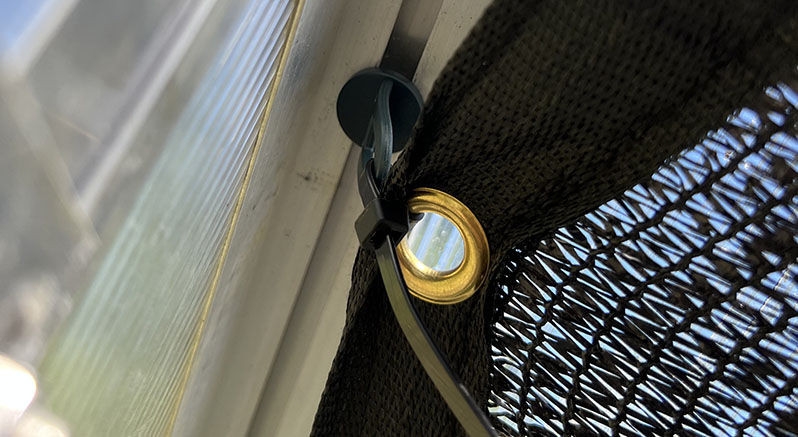
Summary of greenhouse shade
In general, choosing a greenhouse shade cloth is the best way to protect from the scorching sun. Despite all its effectiveness, this tool is compact, easy to clean and lasts for many years. According to manufacturers, the service life of shading nets is about 8-10 years. This is explained by the high resistance of the material to ultraviolet radiation, high humidity and physical impact. Even if individual cells tear over time, the functionality of the mesh will remain intact.


